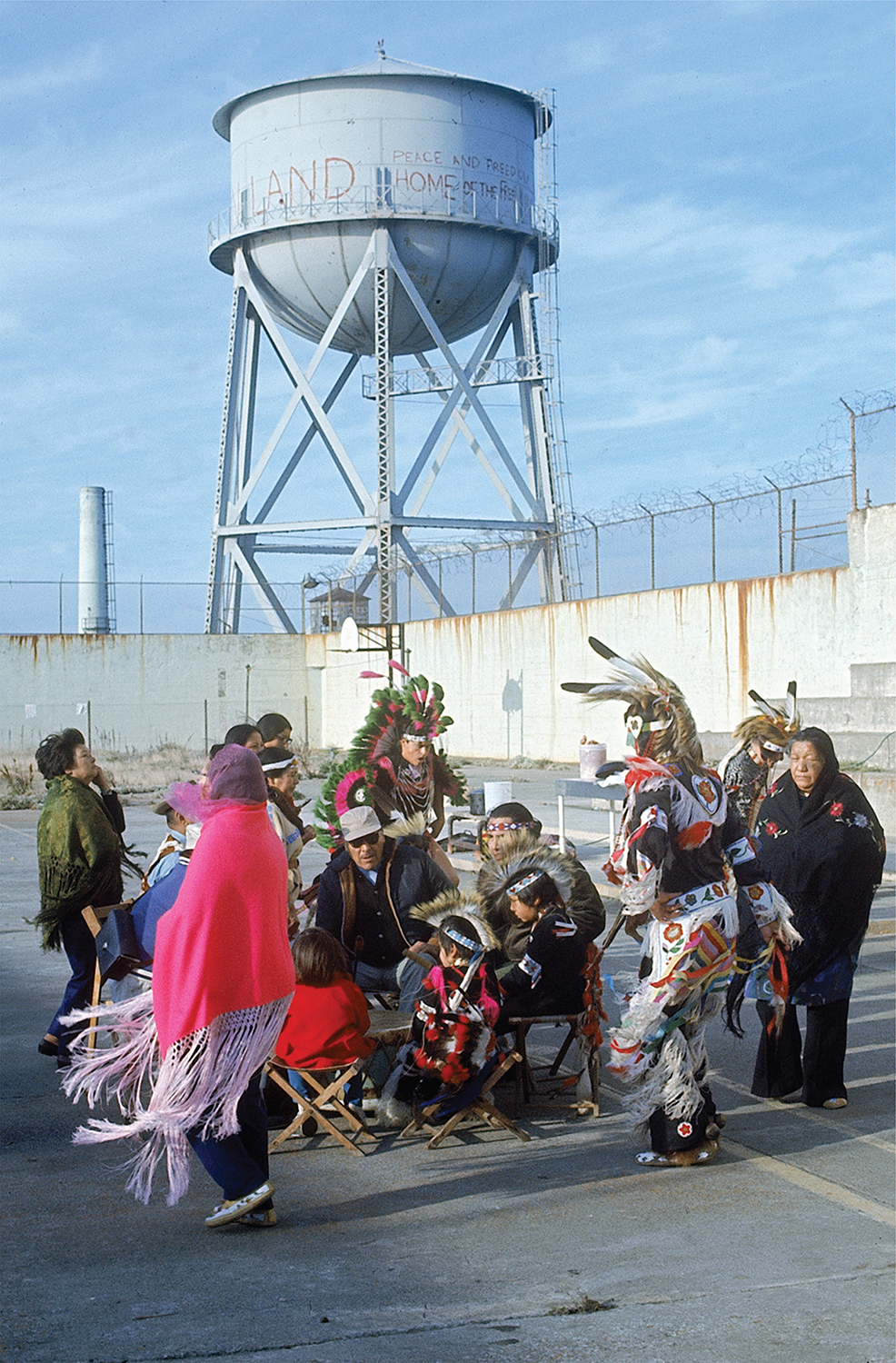The American Promise:
Printed Page 809
The American Promise Value
Edition: Printed Page 755
Chapter Chronology
Native American Protest
The cry “red power” reflected the influence of black radicalism on young Native Americans, whose activism took on fresh militancy and goals in the 1960s. The termination and relocation programs of the 1950s, contrary to their intent, stirred a sense of Indian identity across tribal lines and a determination to preserve traditional culture. Native Americans demonstrated and occupied land and public buildings, claiming rights to natural resources and territory they had owned collectively before European settlement.

Native Americans Occupy Alcatraz Island Beginning in November 1969, some one hundred Native Americans occupied Alcatraz Island in San Francisco Bay. Calling themselves “Indians of All Tribes” to reflect their diversity, they demanded the deed to the island and the creation of an Indian university, museum, and cultural center. Although failing to achieve their goals, they brought attention to the Native American cause and spurred further activism. © Dennis Stock/Magnum Photos
In 1969, Native American militants captured world attention when several dozen seized Alcatraz Island, an abandoned federal prison in San Francisco Bay, claiming their right of “first discovery” of this land. For nineteen months, they used the occupation to publicize injustices against Indians, promote pan-Indian cooperation, and celebrate traditional cultures. One of the organizers, Dr. LaNada Boyer, the first Native American to attend the University of California, Berkeley, said of Alcatraz, “We were able to reestablish our identity as Indian people, as a culture, as political entities.”
In Minneapolis in 1968, two Chippewa Indians, Dennis Banks and George Mitchell, founded the American Indian Movement (AIM) to attack problems in cities, where about 300,000 Indians lived. AIM sought to protect Indians from police harassment, secure anti-poverty funds, and establish “survival schools” to teach Indian history and values. The movement’s appeal quickly spread and filled many Indians with a new sense of purpose. Lakota activist and author Mary Crow Dog wrote that AIM’s visit to her South Dakota reservation “loosened a sort of earthquake inside me.” AIM leaders helped organize the “Trail of Broken Treaties” caravan to the nation’s capital in 1972, when activists occupied the Bureau of Indian Affairs to express their outrage at the bureau’s policies and interference in Indians’ lives. In 1973, a much longer siege occurred on the Lakota Sioux reservation in South Dakota. Conflicts there between AIM militants and older tribal leaders led AIM to take over for seventy-two days the village of Wounded Knee, where U.S. troops had massacred more than one hundred Sioux Indians in 1890 (see “Indian Resistance and Survival” in chapter 17).
Although these dramatic occupations failed to achieve their specific goals, Indians won the end of relocation and termination policies, greater tribal sovereignty and control over community services, protection of Indian religious practices, and a measure of respect and pride. A number of laws and court decisions restored rights to ancestral lands and compensated tribes for land seized in violation of treaties.
